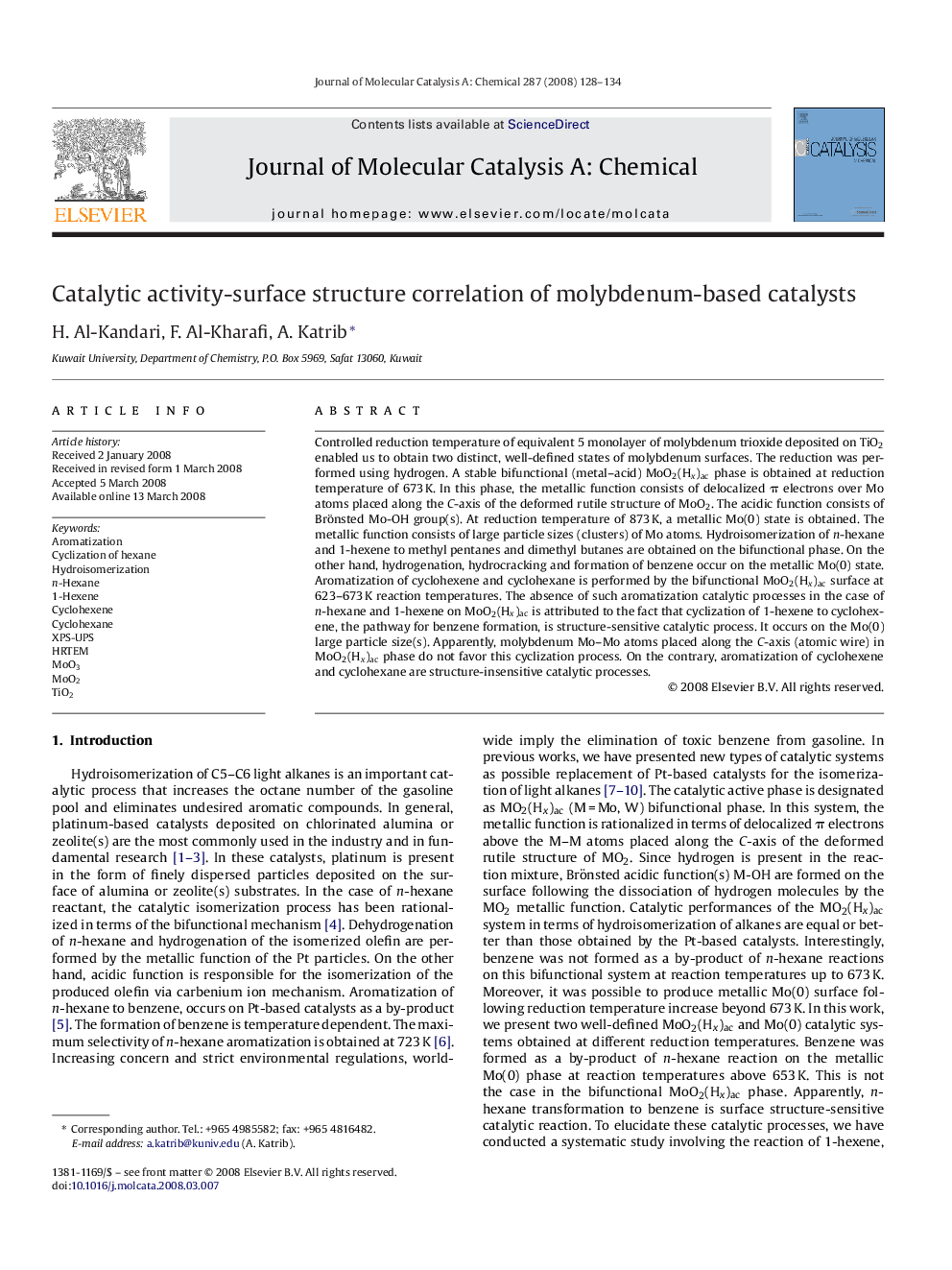| Article ID | Journal | Published Year | Pages | File Type |
|---|---|---|---|---|
| 67354 | Journal of Molecular Catalysis A: Chemical | 2008 | 7 Pages |
Controlled reduction temperature of equivalent 5 monolayer of molybdenum trioxide deposited on TiO2 enabled us to obtain two distinct, well-defined states of molybdenum surfaces. The reduction was performed using hydrogen. A stable bifunctional (metal–acid) MoO2(Hx)ac phase is obtained at reduction temperature of 673 K. In this phase, the metallic function consists of delocalized π electrons over Mo atoms placed along the C-axis of the deformed rutile structure of MoO2. The acidic function consists of Brönsted Mo-OH group(s). At reduction temperature of 873 K, a metallic Mo(0) state is obtained. The metallic function consists of large particle sizes (clusters) of Mo atoms. Hydroisomerization of n-hexane and 1-hexene to methyl pentanes and dimethyl butanes are obtained on the bifunctional phase. On the other hand, hydrogenation, hydrocracking and formation of benzene occur on the metallic Mo(0) state. Aromatization of cyclohexene and cyclohexane is performed by the bifunctional MoO2(Hx)ac surface at 623–673 K reaction temperatures. The absence of such aromatization catalytic processes in the case of n-hexane and 1-hexene on MoO2(Hx)ac is attributed to the fact that cyclization of 1-hexene to cyclohexene, the pathway for benzene formation, is structure-sensitive catalytic process. It occurs on the Mo(0) large particle size(s). Apparently, molybdenum Mo–Mo atoms placed along the C-axis (atomic wire) in MoO2(Hx)ac phase do not favor this cyclization process. On the contrary, aromatization of cyclohexene and cyclohexane are structure-insensitive catalytic processes.
Graphical abstractControlled reduction at 673 and 873 K of the equivalent 5 monolayer of molybdenum trioxide deposited on TiO2 enabled us to obtain two distinct, well-defined bifunctional MoO2(Hx)ac and Mo(0) states of molybdenum surfaces as characterized by XPS-UPS and HRTEM techniques. Catalytic reactions of n-hexane, 1-hexene, cyclohexene and cyclohexane were studied using both catalytic systems. Different catalytic reactions on both surfaces were found to be reaction temperature, electronic and surface structure dependent.Figure optionsDownload full-size imageDownload as PowerPoint slide
